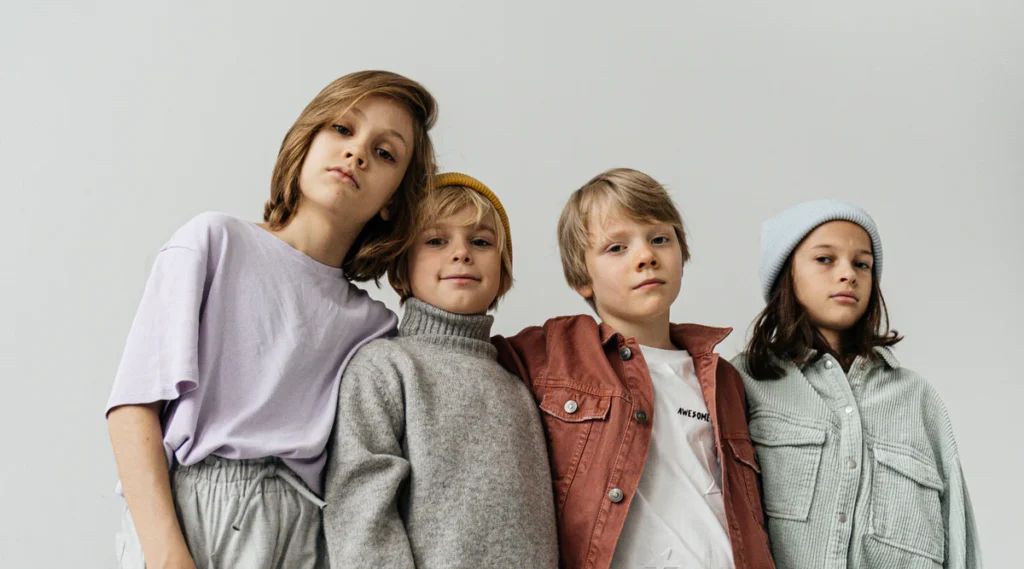Canada’s ever-changing seasons provide a picturesque backdrop to childhood — from snowy escapades to blooming spring walks, golden autumn leaves to sizzling summer fun. But as any Canadian parent knows, keeping little ones dressed for every climate can be a challenge. That’s where handmade Canadian-made clothing steps in — stylish, durable, ethically crafted apparel designed specifically to handle the unique demands of Canada’s climate.
In this post, we explore how small-batch artisans and independent brands are redefining children’s wardrobes with year-round, climate-conscious collections that marry fashion and function.
The Case for Handmade: More Than Just Cute Clothes
Handmade clothing isn’t just adorable — it’s meaningful. Choosing handcrafted garments for your kids offers numerous advantages:
- Quality over quantity: Handmade clothes are often produced in small batches using premium fabrics, meaning they’re built to last through tumbles, mud pies, and frequent washes.
- Ethical production: Many Canadian makers prioritize eco-friendly and ethical production, avoiding exploitative labor practices and harmful chemicals.
- Unique designs: Small labels often feature whimsical patterns, modern silhouettes, and gender-neutral options — a welcome departure from mass-market offerings.
- Supporting local: Buying Canadian-made clothing directly supports local artisans, small businesses, and sustainable economic practices.
Spring: Embracing the Thaw in Style
Spring in Canada is a transitional season — wet, windy, and unpredictably cold. Dressing kids during this time requires thoughtful layering and water-resilient fabrics.
What to Look For in Spring Collections:
- Organic cotton hoodies and joggers: Lightweight yet cozy, they’re perfect for breezy afternoons.
- Layerable vests: Quilted vests made from recycled materials are great for keeping little bodies warm without bulk.
- Water-resistant rain gear: Look for handmade raincoats with fun prints and waterproof seams — many brands now use PUL (polyurethane laminate) that’s both breathable and eco-conscious.
Canadian Brand Spotlight: Rain People Kids offers handmade rain jackets and splash pants in vibrant prints, crafted in Vancouver with water-resistant recycled fabrics.
Summer: Cool, Breathable, and Adventure-Ready
Canada’s summers — although short in some provinces — are full of energy, sun, and play. Handmade summerwear should keep kids cool, protect them from UV rays, and move freely with them from the beach to the backyard.
Key Summer Pieces:
- Linen rompers and dresses: Breathable and soft, linen is a natural choice for keeping cool.
- Sun hats with UPF protection: Many Canadian crafters offer wide-brimmed handmade hats with adorable patterns and functional straps.
- Shorts and tees in bamboo blends: Bamboo is hypoallergenic and moisture-wicking — perfect for kids with sensitive skin.
Canadian Brand Spotlight: Maple & Roo, based in Ontario, specializes in minimalist, neutral-toned kids’ wear using bamboo and organic cotton. Their breezy tank tops and drawstring shorts are perfect for heatwaves and playdates.
Fall: Cozy Layers and Playful Patterns
As the leaves change, so do wardrobes. Fall is a time for texture, layering, and warmth — without diving straight into winter gear.
Must-Have Fall Items:
- Knit cardigans and sweaters: Hand-knitted pieces made with Canadian wool offer unmatched warmth and charm.
- Corduroy overalls and pinafores: Durable and stylish, they pair well with long sleeves and tights.
- Infinity scarves and beanies: Cozy accessories in merino wool or fleece that are gentle on young skin.
Canadian Brand Spotlight: NorthWoven Threads out of Quebec creates hand-knit accessories and rustic clothing inspired by the natural Canadian landscape, using locally sourced materials.
Winter: Designed for the Deep Freeze
From the Atlantic coast to the Rockies, Canadian winters are no joke. While mass-market options often rely on synthetic insulation, many handmade Canadian labels now offer thoughtfully designed cold-weather essentials tailored to kids.
Essential Winter Pieces:
- Wool-blend thermal layers: Merino wool base layers are moisture-wicking and naturally temperature-regulating.
- Hand-sewn snowsuits: Quilted snowsuits with reinforced knees and weatherproof zippers are ideal for harsh climates.
- Mittens and toques: Look for hand-knit options lined with fleece or sherpa for maximum warmth.
Canadian Brand Spotlight: Frost & Fern Apparel in Alberta makes hand-sewn winter outerwear designed for Arctic-level temperatures, using natural insulation materials and windproof linings.
Sustainability and Slow Fashion: Teaching Kids Early
In a fast-fashion world, choosing handmade Canadian-made clothing introduces kids to conscious consumption from an early age. It’s an opportunity to talk about:
- Where clothes come from
- Why quality and ethics matter
- The importance of reducing waste
Many brands now offer clothing swaps, repair kits, or buy-back programs to extend the lifecycle of each item — perfect for growing families or environmentally minded parents.
Supporting Indigenous and Local Makers
Canada’s handmade clothing scene also includes Indigenous-owned businesses that celebrate heritage through textiles, beadwork, and natural dyes. Choosing to support these makers not only ensures a quality garment but helps preserve cultural craftsmanship and storytelling.
Notable Examples:
- Mini Tipi (Gatineau, QC) blends modern fashion with traditional Indigenous patterns.
- SheNative (Saskatoon, SK) creates ethically made fashion and accessories rooted in empowering Indigenous women.
Buying Canadian-made clothing from such artisans helps sustain rich cultural legacies while giving your child a one-of-a-kind wardrobe.
Tips for Building a Seasonal Capsule Wardrobe for Kids
A capsule wardrobe simplifies seasonal transitions and ensures every piece gets used. Here’s how to build one with handmade pieces:
- Start with basics: 3–5 tops and bottoms in neutral tones.
- Add weather-appropriate layers: One lightweight jacket, one heavy coat, a few sweaters.
- Choose dual-purpose items: Dresses that work with tights or solo, vests that layer across seasons.
- Rotate seasonally: Store off-season clothing and revisit each change with intention.
- Invest in quality, not quantity: Choose fewer, better items — a hallmark of Canadian-made handmade clothing.
Final Thoughts: Weather-Ready, Wonderfully Made
Canadian weather demands versatility, and no one understands this better than the artisans and small brands crafting clothing with intention. By choosing handmade Canadian-made clothing, you’re not just preparing your child for the elements — you’re investing in values, supporting local talent, and encouraging sustainable living from day one.
Whether it’s a woolen toque knit in Nova Scotia, a bamboo romper from British Columbia, or a windproof snowsuit stitched in Saskatchewan, each piece tells a story — and keeps your little one stylishly ready for any forecast.






